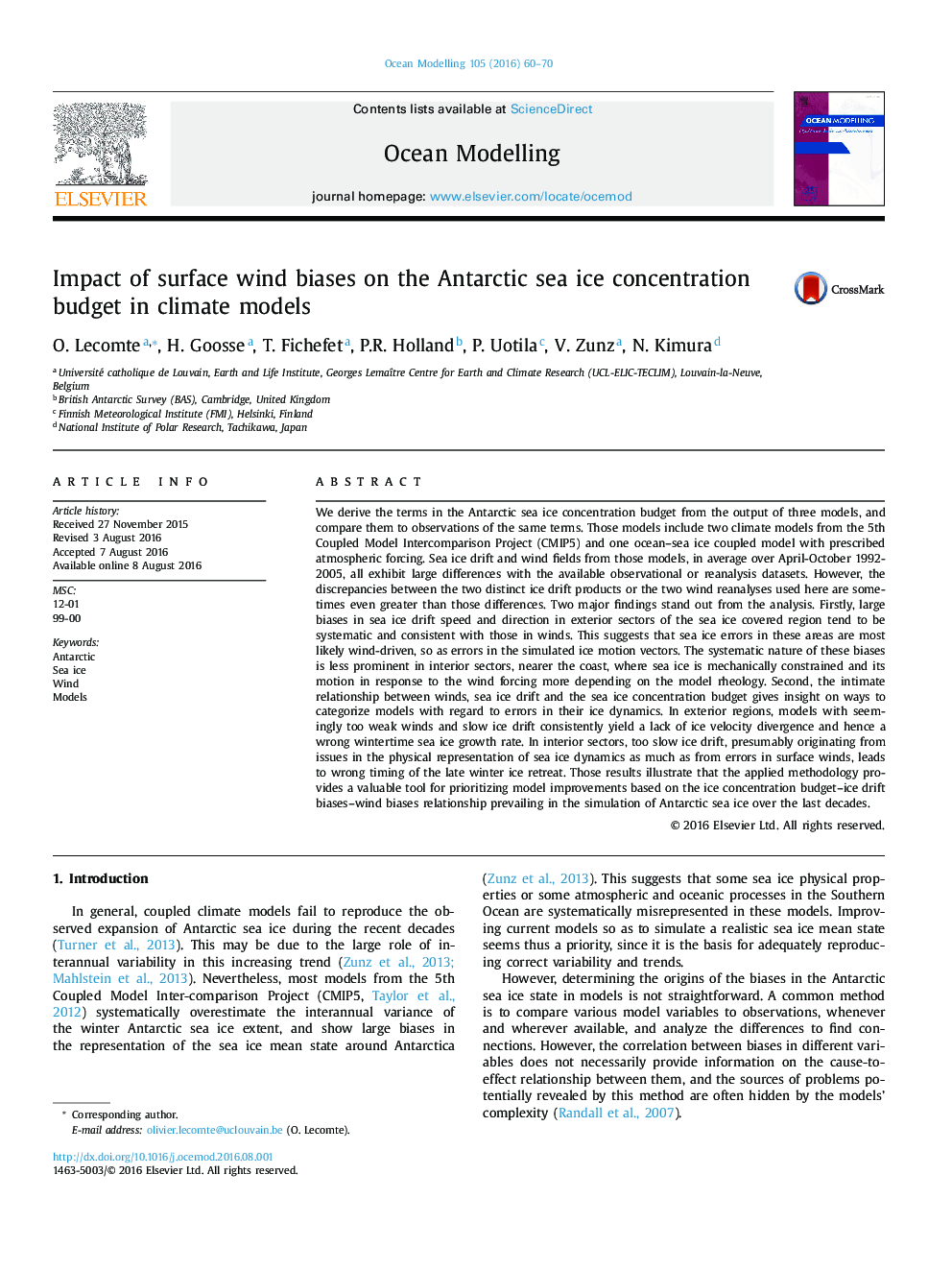| کد مقاله | کد نشریه | سال انتشار | مقاله انگلیسی | نسخه تمام متن |
|---|---|---|---|---|
| 6388017 | 1627744 | 2016 | 11 صفحه PDF | دانلود رایگان |
عنوان انگلیسی مقاله ISI
Impact of surface wind biases on the Antarctic sea ice concentration budget in climate models
ترجمه فارسی عنوان
تاثیر برانگیختگی های سطحی سطح در بودجه کوه یخ دریایی قطب جنوب در مدل های آب و هوایی
دانلود مقاله + سفارش ترجمه
دانلود مقاله ISI انگلیسی
رایگان برای ایرانیان
کلمات کلیدی
قطب جنوب، یخ دریایی، باد، مدل ها، 12-01، 99-00،
موضوعات مرتبط
مهندسی و علوم پایه
علوم زمین و سیارات
علم هواشناسی
چکیده انگلیسی
We derive the terms in the Antarctic sea ice concentration budget from the output of three models, and compare them to observations of the same terms. Those models include two climate models from the 5th Coupled Model Intercomparison Project (CMIP5) and one ocean-sea ice coupled model with prescribed atmospheric forcing. Sea ice drift and wind fields from those models, in average over April-October 1992-2005, all exhibit large differences with the available observational or reanalysis datasets. However, the discrepancies between the two distinct ice drift products or the two wind reanalyses used here are sometimes even greater than those differences. Two major findings stand out from the analysis. Firstly, large biases in sea ice drift speed and direction in exterior sectors of the sea ice covered region tend to be systematic and consistent with those in winds. This suggests that sea ice errors in these areas are most likely wind-driven, so as errors in the simulated ice motion vectors. The systematic nature of these biases is less prominent in interior sectors, nearer the coast, where sea ice is mechanically constrained and its motion in response to the wind forcing more depending on the model rheology. Second, the intimate relationship between winds, sea ice drift and the sea ice concentration budget gives insight on ways to categorize models with regard to errors in their ice dynamics. In exterior regions, models with seemingly too weak winds and slow ice drift consistently yield a lack of ice velocity divergence and hence a wrong wintertime sea ice growth rate. In interior sectors, too slow ice drift, presumably originating from issues in the physical representation of sea ice dynamics as much as from errors in surface winds, leads to wrong timing of the late winter ice retreat. Those results illustrate that the applied methodology provides a valuable tool for prioritizing model improvements based on the ice concentration budget-ice drift biases-wind biases relationship prevailing in the simulation of Antarctic sea ice over the last decades.
ناشر
Database: Elsevier - ScienceDirect (ساینس دایرکت)
Journal: Ocean Modelling - Volume 105, September 2016, Pages 60-70
Journal: Ocean Modelling - Volume 105, September 2016, Pages 60-70
نویسندگان
O. Lecomte, H. Goosse, T. Fichefet, P.R. Holland, P. Uotila, V. Zunz, N. Kimura,
